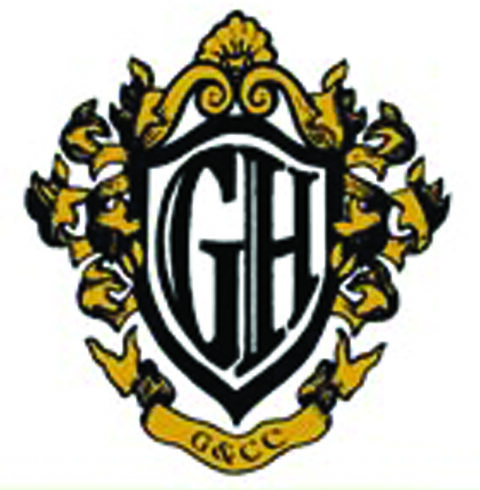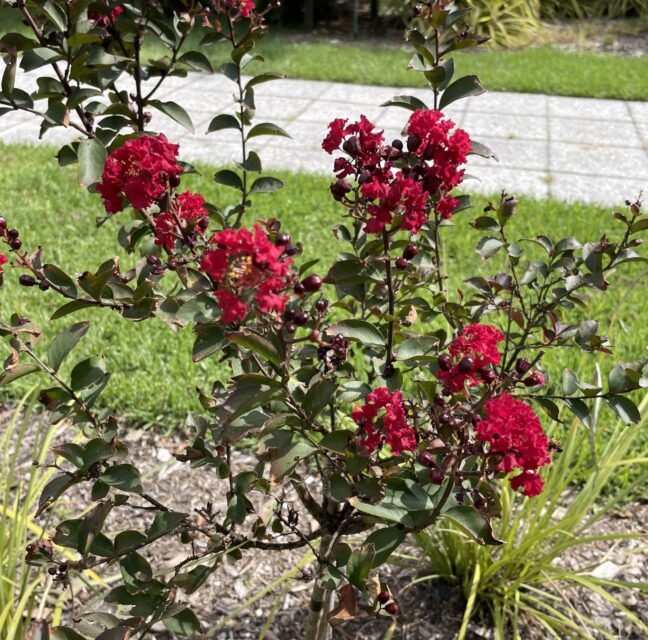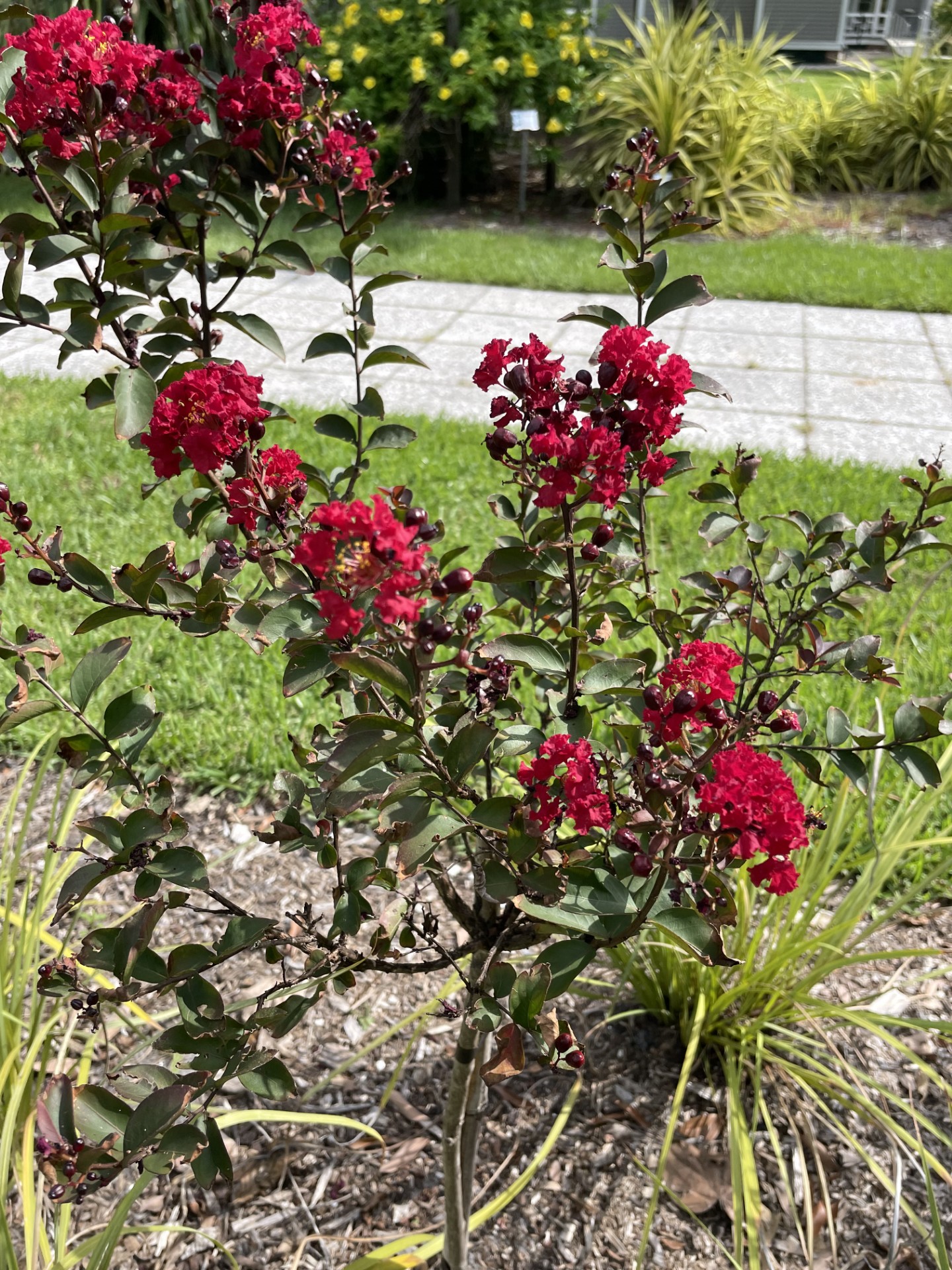
Often mistaken for dead trees during the winter season, the family of Lagerstroemia, Crape Myrtles, are bursting forth with blooms ranging from white to deep magenta. At Edison and Ford Winter Estates, we have an unusually rare collection of species, as well as some uniquely tropical specimens.
The old-world spelling of crape probably originated in Europe with an old French word indicating the color crimson. Sometimes spelled as crepe, which is derived either from the old Greek for mulberry, a plant closely associated or in reference to the delicate paper-like flowers and thin bark. To clarify, both common spellings are acceptable and appear to be regional adaptations. While belonging to the plant order of myrtles, these trees are not true myrtles, so botanists suggest the name be presented as a single world, i.e., crapemyrtle or crepemyrtle.
An exceptional tropical species is the Queen Crape Myrtle (Lagerstroemia speciosa), also known as Pride of India, which is far less cold tolerant than the more common Lagerstroemia indica that decorate many roadways and parking lots throughout the South. The Queen naturally produces lavender blooms and thrives in our zones 10-11. Pink flowered Queens exist but in 2015, the USDA in Miami introduced a new hybrid that produced the largest pink flower spikes ever seen. Appropriately, the introduction was named Big Pink and it grows in the riverside gardens in front of Edison’s home. The Queen naturally grows as a multi-trunk, but good pruning will strengthen the tree to grow as a single trunk or “standard” flowering tree, reaching 50 feet or more in height.
The Queen Crape will suffer if grass or ground cover is planted around its base. For additional summer color, consider caladiums that will thrive in the Queen’s shade. As the common name implies, the Queen is native to Asia but it is not considered a nuisance or invasive species in Southwest Florida.
In Hindu, the Queen Crape is known as the Banaba tree. Naturalists or those who study traditional Ayurveda or Indian medicine may recognize the name Banaba. With many medicinal properties, scientists are still examining the efficacy of a concoction of the l. speciosa leaves, particularly in combination with the popular drug known as Metformin, used to reduce glucose levels in the blood, thereby helping diabetes patients.
Best planted away from the house – ideally on a boundary line or in a sunny corner – this large species produces a wide canopy; however, fallen flowers and leaves may make for a messy yard. Give them full sun and don’t be surprised if the remaining leaves turn red in the late winter. This is normal. Protect its lower trunk from errant mowers and similar landscape tools, as the bark is quite delicate and easily damaged; belying the fact that it protects a trunk known for its high quality and extremely durable lumber with a similar ranking to teak on the Janka wood hardness scale. Wood from lagerstroemias is also quite termite resistant.
Much more widespread, with some specimens living as far north as Massachusetts, is the multi-trunked or shrub-like Lagerstroemia indica, the Crape Myrtle, growing to only about 20 feet in height. Certainly not a flowering tree for snowbirds, these China natives are completely deciduous in winter, providing an opportunity for the sun to stream through their bare canopies to winter flowering annuals planted beneath. This cold hardy lagerstroemia can die back with frost, but if not fed or watered late in the season in lower zones, such as zones 6-9, no harm will be done, and the shrub will bounce back with warmer temperatures.

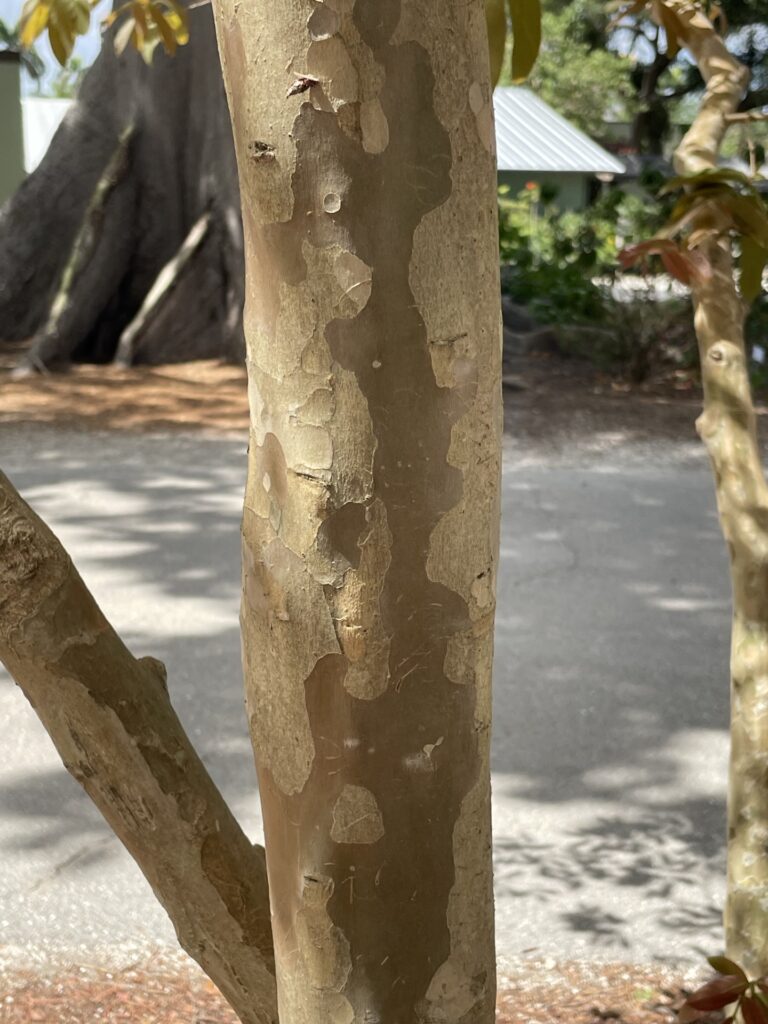
VISITORS CAN VIEW SEVERAL SPECIES OF CRAPE MYRTLES AT EDISON AND FORD WINTER ESTATES.
Love the color but not the size? Consider dwarf varieties of L. indica with names such as Cherry Dazzle, My Fair Myrtle, Rikki Tikki Pink and Black Diamond (with red flowers against dark colored leaves). Dwarfs may be easily grown in pots, but when in the ground, super drainage is the key to success.
All lagerstroemias require regular water, particularly during extensive dry periods, to look their best. With additional water, these “southern lilacs” will also do quite well in arid gardens once they are established. These plants prefer slightly acidic soil with a pH of 6 to 6.5 and if your soil is purchased for a container or alkaline in the garden, mix in good compost or coffee grounds. Elemental sulphur can easily be purchased online and will also aid in lowering pH for a longer period of time than just using organics. If soil is too rich, the shrubs may grow healthy branches and leaves but have few flowers (which appear on new growth).
For our botany hobbyists, though generally bare during the winter months, L. indica has its unique features that include exfoliating or peeling bark and sprays of seed pods that are fun to use in floral arrangements. If shrubs are pruned to restrict the height of your Crape Myrtles, reaching the seed pods is a cinch.
Seed dispersal for lagerstroemia is known as explosive dehiscence because the dried pods literally explode or pop open, letting the wind disperse the shower of seeds. By looking around the gardens at Edison and Ford Winter Estates, you will find many varieties of plants that employ this method of seed dispersal. Upon close examination of the seed pods on henna plants in the wildflower garden or community garden in late fall to early winter, it is easy to understand how these plants are both classified in the plant family Lythraceae, which also includes cuphea and loosestrife.
Crape Myrtles may be started from seed; however, they are quite slow to germinate and care must be taken to prevent the seeds from rotting before they germinate. Seeds from hybridized cultivars will not typically produce the same color flower – if it’s flower color you are looking for, then be sure to propagate the plant vegetatively.
A close neighbor to the Kapok tree at the Estates is the Siam Crape Myrtle (Lagerstroemia siamica or syn. L. floribunda var. cuspidate). Very similar in all its growth and flowering patterns to L. speciosa, this native of Thailand and Myanmar is indigenous to their humid forests and will grow to more than 90 feet in its native habitat, but only to approximately 30 feet in Southwest Florida (if conditions are right). This particularly tropical Siam Crape Myrtle has a smaller range of colors than the L. indicia and will not tolerate any frost. It is often chosen for tropical landscapes for its stunning exfoliating bark on the multi-stemmed trunk.
Another cultivar at the Estates can be found along the allée, leading to the fountain and just beyond the security tent. “Natchez” grows to 35 feet or so, and is the most widely planted variety throughout the South. It produces white flowers and cinnamon-colored wood and is considered one of the few lagerstroemias that have a fragrance when in bloom.
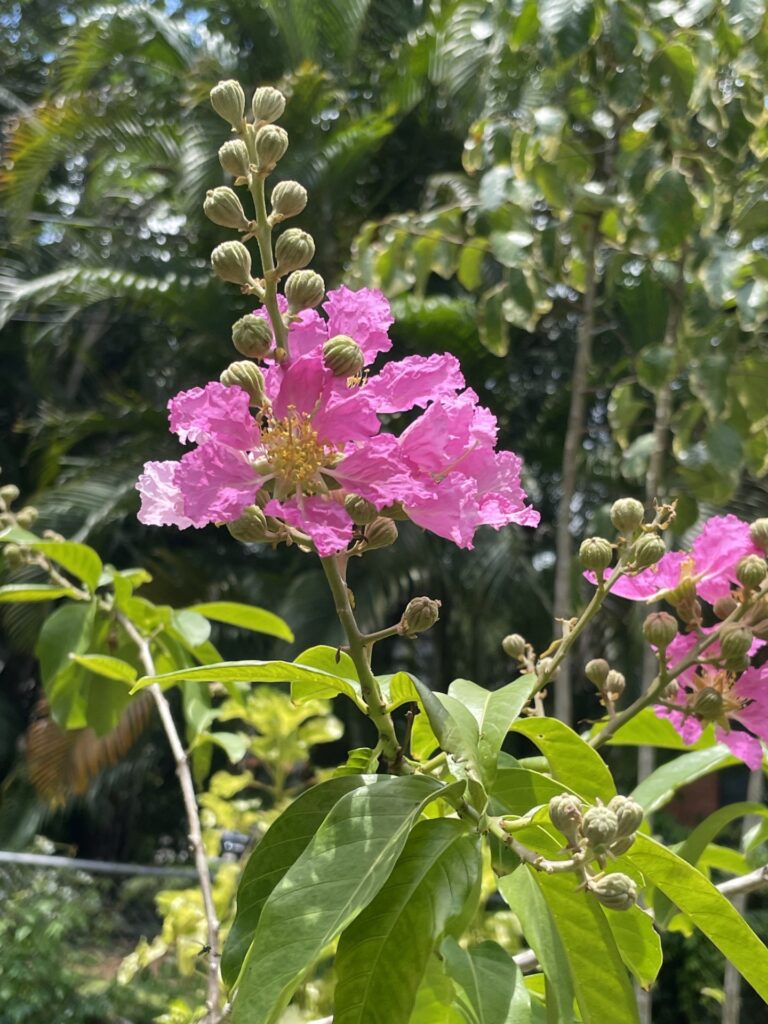

CRAPE MYRTLES ARE AVAILABLE IN SEVERAL COLORS, INCLUDING WHITE, LAVENDER, PINK AND RED. SUMMER IS A GOOD TIME TO SEE THE TREES COVERED IN BLOOMS.
The next time you visit, enjoy viewing the collection of Crape Myrtles, predominantly on the riverside, while the Thai or Siam (the old name of Thailand) Crape Myrtle is just across from the Kapok (near the laboratory).
It’s probably appropriate to close with addressing the issue of “crape murder.” A common problem in the South, it is the crime of crimes when it comes to pruning – often a case of “monkey see, monkey do.” It is never appropriate to hack this beautiful tree, creating nubby growths with weak flower stems. Some educated pruning is always encouraged, but the smart move is purchasing a cultivar that doesn’t grow too big for your garden so that you can always see its beautiful summer flower show!


